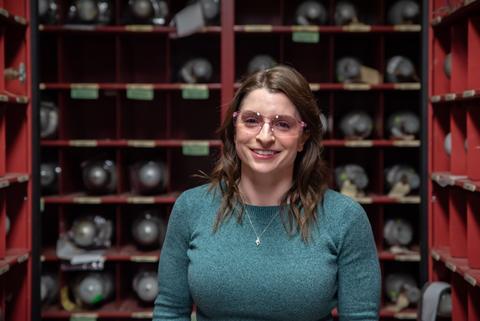Spotlight: Physical Scientist Christina Cecelski Goes From In-Flight to In-the-Lab Experiences

Coming from flights of fancy (instruments), physical scientist Christina Cecelski has landed at a place that matches her personality: NIST.
Though she was already set on a path into science by the time she enrolled at the University of Maryland for graduate studies, Christina hadn’t experienced hands-on laboratory or field work. She mostly focused her atmospheric science studies on simulations and computer models.
All of that changed with an unusual comment: “You’re small. Want to fly in a plane?”
When Christina walked into a professor’s office, that’s the question he posed. As it turned out, he coordinated field experiments to measure chemical compounds in the air using a small plane packed with measurement instruments.
During the next couple of years, Christina ascended over the Maryland and D.C. landscape about a dozen times. She and her colleagues collected data on the presence of ozone, particulate matter and other air pollutants. They also flew on bad air quality days and sent reports to the Maryland Department of the Environment to help improve regional air quality.
When she graduated, Christina sought job opportunities that were a little more down to earth. Two paths lay before her: one in calibrations that required lots of coding and computer work, the other in the lab and among the instruments.
Fortunately for us, she chose the latter.
For nine years at NIST, Christina has developed standards for volatile organic compounds in compressed gas cylinders. These chemicals exist in trees, perfumes, cleaning products and even human breath. They can contribute to atmospheric chemistry and affect the climate.
Perhaps the measurement work could be seen as tedious from the outside when compared to her previous work up in the air, but Christina considers NIST to be exactly the right place for her. As a detail-oriented person, she’s grounded in the minutiae and takes an interest in the incremental work that metrology presents.
That’s because, when it comes to climate research, the tiniest of measurements here in the gas standards library can have a global impact.
Follow us on social media for more like this from all across NIST!

